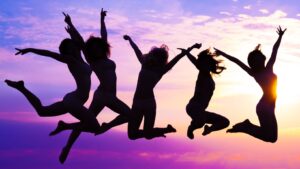Capturing the grace and fluidity of dance through photography is a mesmerizing art form that I’ve always been drawn to. As a photographer, I find that the intricate movements and expressions of dancers offer a unique and captivating subject to work with. From the elegant lines of a ballet dancer to the explosive energy of a hip-hop performer, each genre of dance presents its own set of challenges and rewards when behind the lens.
In this article, I’ll delve into the world of dancer photography, exploring the techniques, equipment, and creative approaches that can help photographers capture the essence of movement and emotion in their images. Whether you’re a seasoned pro or just starting out, there’s always something new to learn when it comes to translating the art of dance into stunning visual compositions. Join me on this journey as we uncover the magic of dancer photography together.
Dancer Photography

Exploring the world of dancer photography, I find the captivating essence lies in the seamless merger of movement and light. It’s not just about freezing a moment; it’s about infusing life into still images. As a photographer, I immerse myself in the dynamic landscape of dance, where every flicker of light and every graceful posture tell a story of elegance and passion.
In dancer photography, understanding the interplay between movement and light is paramount. It’s about harnessing the energy of the dance, the fluidity of motion, and the play of shadows to create visual masterpieces that resonate with viewers. Whether it’s a fleeting leap or a gentle twirl, each movement carries its own rhythm and charm, waiting to be immortalized through the lens.
To capture the art of dance through photography is to blend technical precision with creative vision. It’s about finding the perfect balance between shutter speed and aperture, between light and shadow, to unveil the magic that unfolds on the stage. Each photo is a testament to the passion and skill of the dancers, a moment frozen in time that echoes with the rhythm of their artistry.
Essential Gear for Dancer Photography
Choosing the Right Camera

When delving into the world of dancer photography, selecting the right camera is paramount. For capturing the intricate movements and expressions of dancers, I recommend using a camera with a high-speed burst mode. This feature allows you to capture swift movements with precision, ensuring you don’t miss any crucial moments during a dance performance. A camera with a full-frame sensor is also beneficial as it performs exceptionally well in low light conditions, a common setting in dance studios or performances.
The Best Lenses for Movement
In dancer photography, having the appropriate lenses can make a significant difference in the quality of your images. For capturing movement with clarity and detail, a prime lens with a wide aperture, such as a 50mm f/1.8, works exceptionally well. This type of lens enables you to create stunning bokeh effects, emphasizing the subject while beautifully blurring the background. Additionally, a telephoto lens like a 70-200mm can be valuable for capturing dancers from a distance without compromising image quality.
Lighting Equipment Recommendations
Lighting plays a crucial role in enhancing the visual impact of dancer photography. To illuminate dancers effectively and highlight their movements, I suggest using a combination of continuous lighting and off-camera flashes. Softboxes and diffusers can help create soft, flattering light that complements the gracefulness of dancers. Additionally, incorporating colored gels can add a creative touch to your images, allowing you to play with different lighting effects and moods during photo shoots.
By carefully choosing the right camera, lenses, and lighting equipment, you can elevate your dancer photography and create captivating images that truly capture the spirit and artistry of dance.
